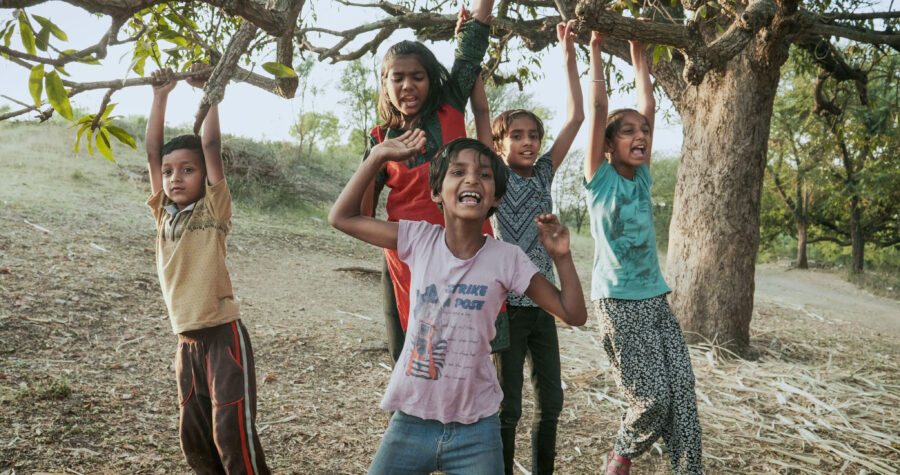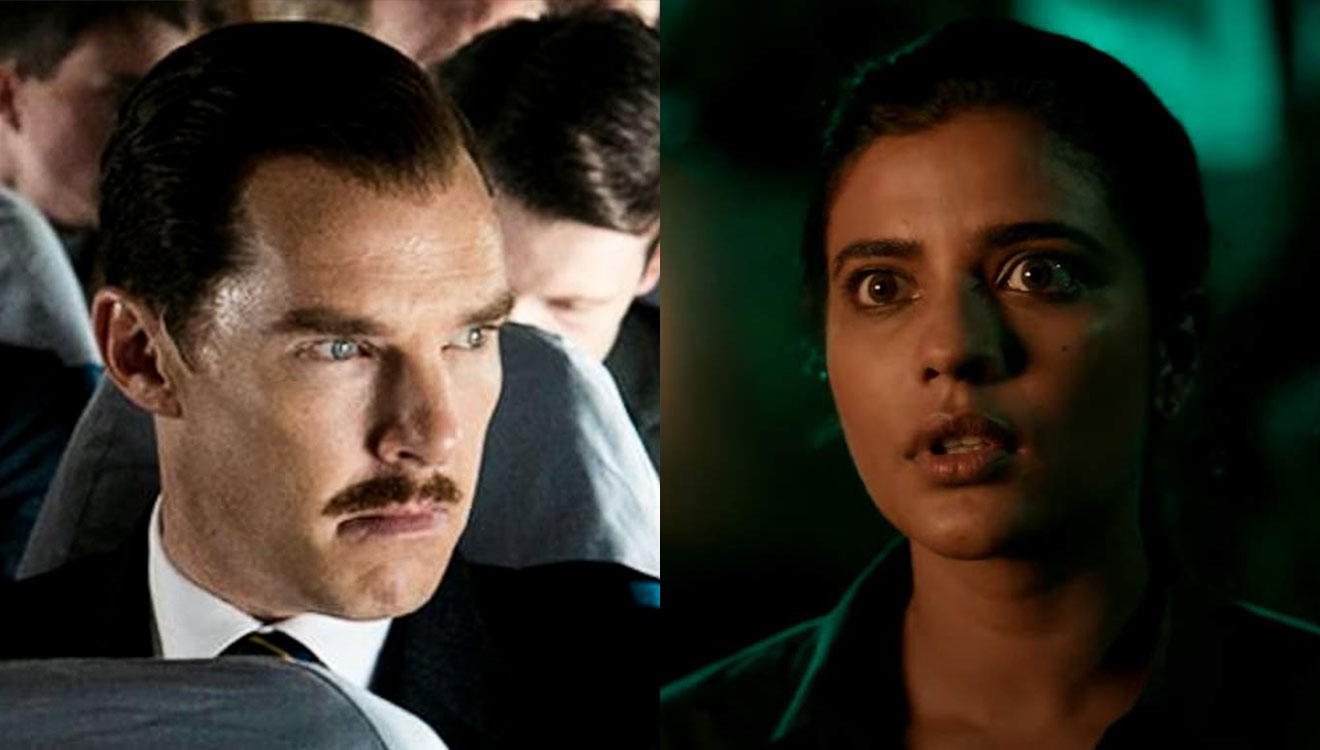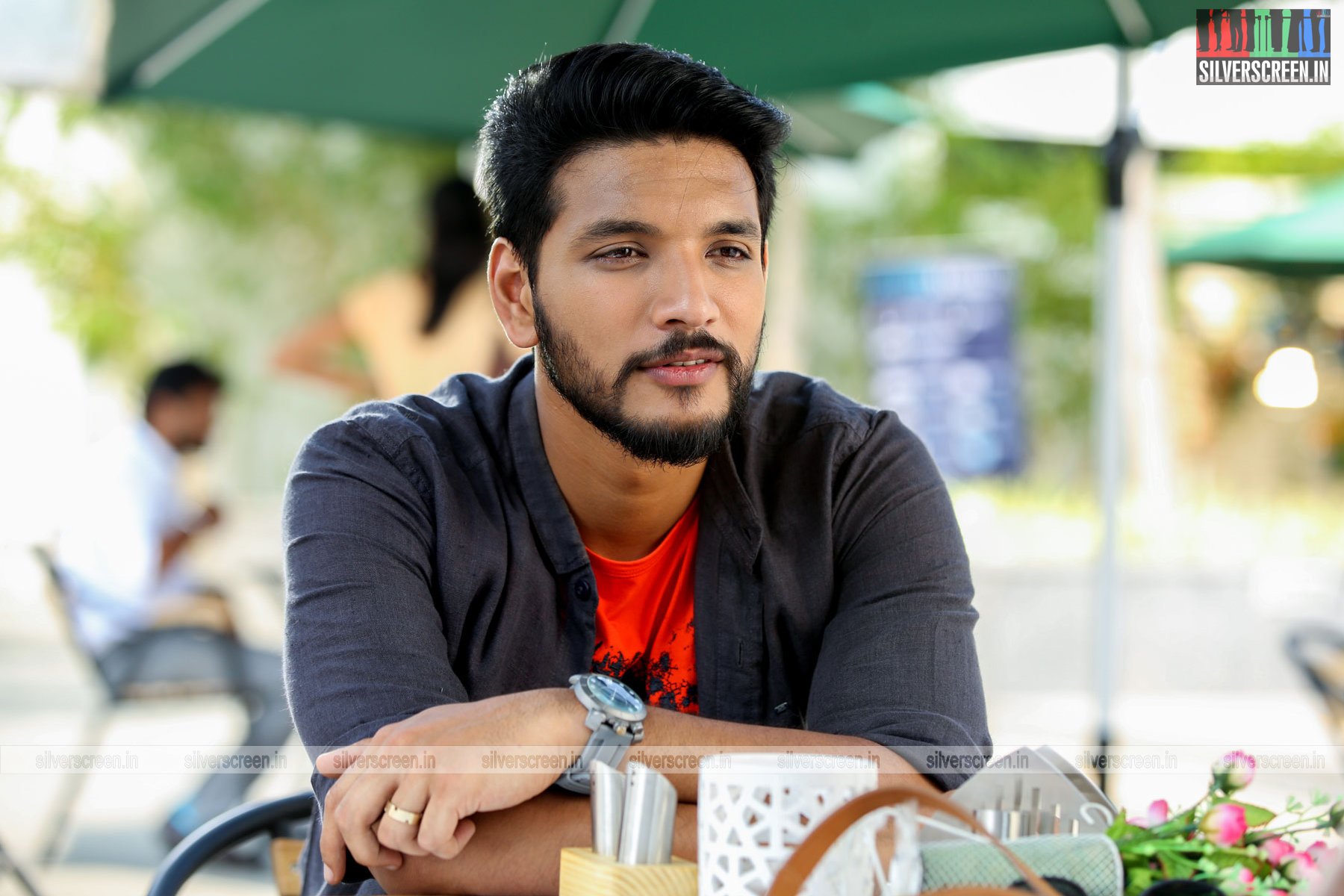Last February, Nithin Anil, a 23-year-old media graduate from Kochi, and his friends travelled to Arale in Maharashtra to shoot a feature film in Marathi, a language none of them speaks or understands. All the characters were played by local villagers. A Thing of Magic, a delightful slice-of-life drama centred on two spunky little sisters who come across a pair of 3D glasses that piques their interest, was selected to the India Story category (non-competition) of the 21st MAMI Mumbai Film Festival that concluded on October 24. The film is less plot-oriented and more observational; alive with simple day-to-day moments from the villagers’ life. Post the film festival, the youngsters boarded a bus to Arale, to screen the film for the people who made it possible.
***
Arale lies 360 kilometres south of Mumbai. A little over 480 families live in the village skirted by a river and vast fields of sugarcane. Most days, it is a quiet and uneventful place where life runs in a predictable cycle. However, in the last week of October, the stillness in Arale was briefly disrupted by the homecoming of A Thing Of Magic.
“It was like a fan show of a superstar film!” says Nithin Anil, the first-time director of the film, who is now back to his hometown Kochi.
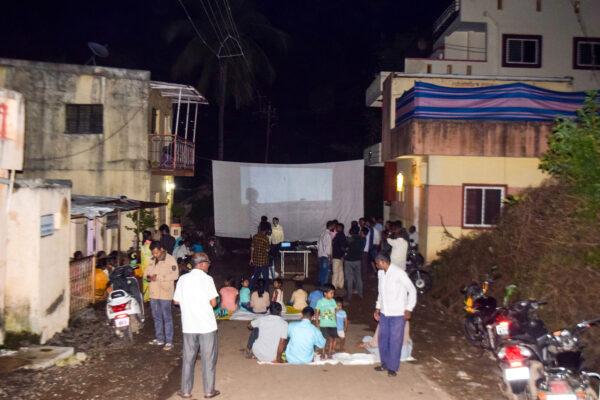
screening-2
“We reached the village with a projector and a Bluetooth speaker, but we were not sure where to screen the film. The villagers didn’t seem to be worried about it, though. They immediately got down to work. A rope was tied from one roof to another. A big white sheet of cloth was hung from it. The street was immediately cleared, and the traffic blocked. One of them arranged for the street lights in the vicinity to be switched off. By 7 pm, we were ready to screen the film!”
Post sunset, people started to gather on the street with mats to sit on and snacks to munch. Some took a seat on neighbouring terraces. There was music and laughter, and an auspicious coconut breaking ceremony to ward off evil.
“Since every cast member was from the village, each of them got a roaring applause, especially Harshad Baliram who played Gundu Kakka, one of the lead characters,” says Nithin. “Some of the actors had attended the screening at Mumbai Film Festival. They couldn’t quite tell if the audience had liked the film or not, thanks to the disciplined way the film festival crowd in Mumbai conducts itself inside a screening hall. Here in the village, everyone hooted, laughed and clapped throughout the film. It was a happy event.”
Nithin was 22 when he set out to make a feature film with a team of four friends he met on a film set where he worked briefly as a cinematographer’s assistant. He was greatly influenced by Rima Das’ Village Rockstars – thematically as well as by Das’ rebellious style of filmmaking. Another filmmaker whose name appears in the credit is Dileesh Pothan. “As a self-taught director, I learned a great deal about handling actors from Pothan’s interviews. He is practical, and not superficially “deep”. He says that in order to communicate the scenes to the actors, the director first has to internalise the scene.”
The story he had in mind required a rustic non-Kerala setting. “Initially we thought of shooting the film in Karnataka. My uncle, who was familiar with rural Maharashtra, suggested that we consider Arale.” Before landing in Arale, Nithin and his friends spent over a month travelling through interior Maharashtra. “Some of the villages were not electrified. Deprivation was starkly visible. We didn’t want to impose ourselves upon those villagers.”
Arale is a small village where everyone knows each other, well cut off from the city. “When we told someone in the village that we were looking to rent out a house during the shooting period, he immediately consulted his friends and took us to a family who rented out its vacant top-floor space to us for a sum as meagre as Rs 500 per month.”
The actors were selected in an audition. “When we said anyone in the village could attend the audition, we weren’t expecting a great response. But, to our surprise, the entire village turned up for the audition. And they were all good too!”
A nomadic singer who appeared in the village playing an Ektara on one of the days of the shoot, is featured in the film. “We were elated when we found him because, first of all, he was a great singer, and secondly, we didn’t have the budget to record an original song in a studio.”
Nithin doesn’t speak Marathi, although, he says, he has now started to understand the language a little. “Vaibhavi, the child who plays the elder sister in the film, had struck a pact with me before shooting began. She would only speak to me in Marathi, and I would respond only in English. That way, both of us would pick up bits and pieces of the two languages.”
While Nithin was always aware of the language barrier, he believed he would be able to scrape through with the help of Hindi. “I was naive enough to believe that everyone north of Western Ghats spoke Hindi. In Arale, most people don’t speak Hindi. It is not their language.”
Nithin and his translator, Aninditha Pradeep, devised a plan to tackle the communication problem. The actors weren’t given dialogues, but just the context, and were asked to improvise. “For a scene where two mothers crib about their children’s lack of respect for them, I explained the situation. The actors created their dialogues, my translator recorded it and played it back to me. It was a long and tedious process that required a lot of patience and energy. This is why I am grateful to the people of Arale. If not for their cooperation, this film wouldn’t have happened.”
Nithin wrote the screenplay during his stay in Arale. “Before finalising the shooting location, I had written a pointer for the story and a few scenes. I fleshed out the screenplay with the details I picked up from Arale. It was important,” he says.
Nithin’s approach, interestingly, blurs the line between characters and actors. Sometimes, the film just watches the villagers go about their chores. “While living there, one of the everyday sights I came across was of women cracking groundnut shells and passing the kernel to the people sitting around. There was something so meditative about that image. I knew I had to include it in the film.”
The 3D glasses at the centre of the film’s story is a subtle tribute to Abbas Kiarostami’s Koker Trilogy, says Nithin. “Those films have had a huge influence on me. Kiarostami brings in so much detailing using a meta-narrative. We grow closer to the people in Koker through each film..”
There is no cinema hall in Arale. “Many houses continue to use a black-and-white television. The villagers have mobile phones on which they play PUBG and watch soap operas, but none of the people I met in the village had any serious interest in movies and pop culture,” says Nithin.
Perhaps, it’s this lack of fascination about pop-culture that makes them effortless actors in front of the camera. “The actors were not intimidated by the camera or the crowd watching them. They were just thrilled to be part of the creative activity.”
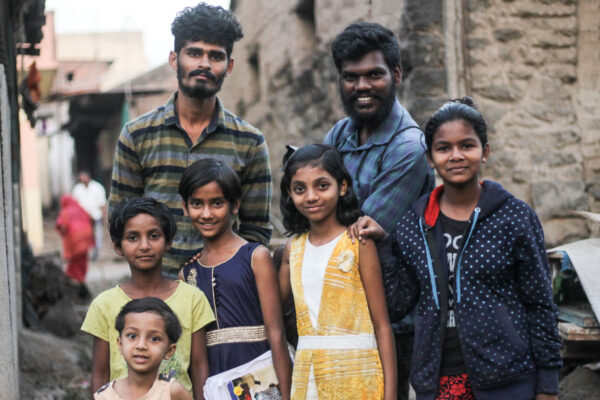
IMG_0887-(1)
Making a low-budget movie
Nithin used to attend Q&A sessions of film festivals to know how indie filmmakers managed their budget. “No one really revealed a figure. They would say their budget was ‘low’, but I wanted to know how low it could really go. I had no money at all. When I met some directors in Kerala, they said you could never go below Rs 10 Lakh. That really dissuaded me. That’s when I decided not to talk to filmmakers,” he says.
Nithin and his team made A Thing Of Magic at a shoestring budget of Rs 60,000. The film was shot by Priyadarshan ND, on a Panasonic Gh5 camera. The team didn’t have a shoulder rig, so they made one out of PVC pipes. “The flip-side of working on such a shoestring budget is that I had to schedule the post-production according to many people’s availability. Everything took a lot of time. The sound, for one, was completed in two months.”
Until the screening at Mumbai Film Festival, none of the crew members, including the director, knew how the film was going to look on the big screen. “That’s why our MAMI experience was so special. We were apprehensive how the visuals, shot with our minimal equipment, would turn out on the big screen. But, surprisingly, everything looked fine.”
Recommended
Nithin now wants to compile his experience of navigating the tedious stages of indie filmmaking into a booklet. “You can save a lot of money if you know certain basic things. For instance, no one I consulted with about indie filmmaking told me that making a DCP (Digital Cinema Package) was expensive. I barely knew what a DCP was. Many new filmmakers enter the field without such fundamental information. These are things that we take for granted. I was lucky enough to find a man in Kolkata who agreed to do the DCP work for an incredibly nominal amount.”
Nithin is the son of Zeenath, a veteran theatre-film actress and a State award-winning voice artiste. Her response to her son’s decision to take the plunge into filmmaking was, unsurprisingly, unfavourable. “She was shocked. At that time, I had just Rs 30,000 in my account. She said it was impossible for someone like me to make a feature film, and asked me to buy a laptop using that money. I was a freelance writer at that time,” laughs Nithin.
Nithin is yet to buy that laptop.
***
